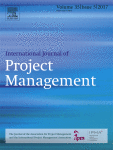
This paper critiques the traditional project management (PM) approach for post-disaster reconstruction work in relation to long-term effectiveness at strengthening disaster resilience of communities. While assessments of post-disaster reconstruction projects normally occurs within a few years of the disaster this paper is based on a study of four ‘good practice’ reconstruction projects, 15 years after the earthquake and seven years after the flooding disaster from the Indian states of Gujarat and Bihar respectively. This extended timeframe enabled the examination of long-term outcomes related to disaster resilience of communities. The comparison of the four case study projects through extended timeframe enabled authors to articulate critical success factors contributing to project's effectiveness. The research found that the best long-term outcomes were achieved when the agencies implementing post-disaster housing reconstruction projects: 1) adopted an ‘agile’ approach to project planning and implementation; 2) allocated ample time for gaining and maintaining community trust; iii) provided multiple materials, technologies and skilled labour choices to ensure hazard-safety of housing, and (iv) continued community capacity building beyond the completion of the reconstruction work. These imperatives have prompted the development of a progressive, spiral model for effective post-disaster housing reconstruction project management which is presented in this paper.
